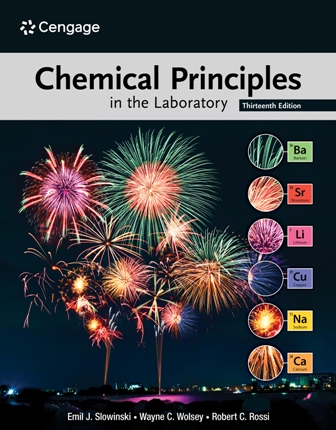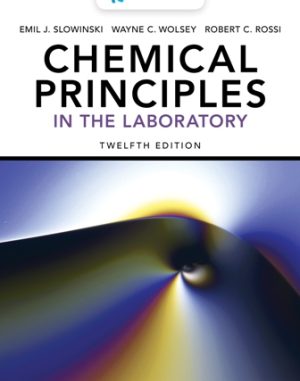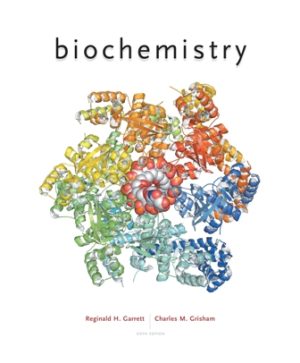Solution Manual for Chemical Principles in the Laboratory 13th Edition Slowinski ISBN-10: 0357851277 ISBN-13: 9780357851272
Solution Manual for Chemical Principles in the Laboratory, 13th Edition, Emil J. Slowinski, Wayne C. Wolsey, Robert C. Rossi, ISBN-10: 0357851277, ISBN-13: 9780357851272
Table of Contents
1. The Densities of Liquids and Solids.
2. Resolution of Matter into Pure Substances, 1. Paper Chromatography.
3. Resolution of Matter into Pure Substances, 2. Fractional Crystallization.
4. Determining a Chemical Formula.
5. Identifying a Compound by Mass Relationships.
6. Properties of Hydrates.
7. Analysis of an Unknown Chloride.
8. Using the Ideal Gas Law: Atmospheric Pressure and the Absolute Zero of Temperature.
9. Molar Mass of an Easily Vaporized Liquid.
10. Analysis of an Aluminum-Zinc Alloy.
11. The Atomic Spectrum of Hydrogen.
12. Periodic Trends in the Alkaline Earth Metals (Group 2) and the Halogens (Group 17).
13. The Geometric Structure of Molecules—An Experiment Using Molecular Models.
14. Heat Effects and Calorimetry.
15. Vapor Pressure and Enthalpy of Vaporization.
16. The Structure of Crystals—An Experiment Using Models.
17. Classification of Chemical Substances.
18. Some Nonmetals and Their Compounds—Preparations and Properties.
19. Determining Molar Mass by Freezing Point Depression.
20. Rates of Chemical Reactions, 1. The Iodination of Acetone.
21. Rates of Chemical Reactions, 2. A Clock Reaction.
22. Properties of Systems in Chemical Equilibrium—Le Châtelier’s Principle.
23. Determining the Equilibrium Constant for a Chemical Reaction.
24. Standardizing a Basic Solution and Determining the Molar Mass of an Acid.
25. pH Measurements—Buffers and Their Properties.
26. Determining the Solubility Product of Ba(IO3)2.
27. Relative Stabilities of Complex Ions and Precipitates Prepared from Solutions of Copper(II).
28. Determining the Hardness of Water.
29. Synthesis and Analysis of a Coordination Compound.
30. Determining Iron by Reaction with Permanganate—A Redox Titration.
31. Determining an Equivalent Mass by Electrolysis.
32. Voltaic Cell Measurements.
33. Preparation of Copper(I) Chloride.
34. Development of a Scheme for Qualitative Analysis.
35. Spot Tests for Some Common Anions.
36. Qualitative Analysis of Group I Cations.
37. Qualitative Analysis of Group II Cations.
38. Qualitative Analysis of Group III Cations.
39. Identification of a Pure Ionic Solid.
40. The Ten Test Tube Mystery.
41. Preparation of Aspirin.
42. Rate Studies on the Decomposition of Aspirin.
43. Analysis for Vitamin C.
44. Fundamentals of Quantum Mechanics.
Appendix A: Vapor Pressure and Density of Liquid Water.
Appendix B1: Summary of Solubility Properties of Ions and Solids.
Appendix B2: Some Properties of the Cations in Groups I, II, and III.
Appendix C: Standard Atomic Weights of the Elements (Scaled relative to Carbon-12 = 12 g/mol).
Appendix D: Making Measurements—Laboratory Techniques.
Appendix E: Numbers in Science—Significant Figures and Making Graphs.
Appendix F: Suggested Locker Equipment.
Appendix G1: Introduction to Excel.
Appendix G2: Introduction to Google Sheets.
Appendix H: Statistical Treatment of Laboratory Data.




